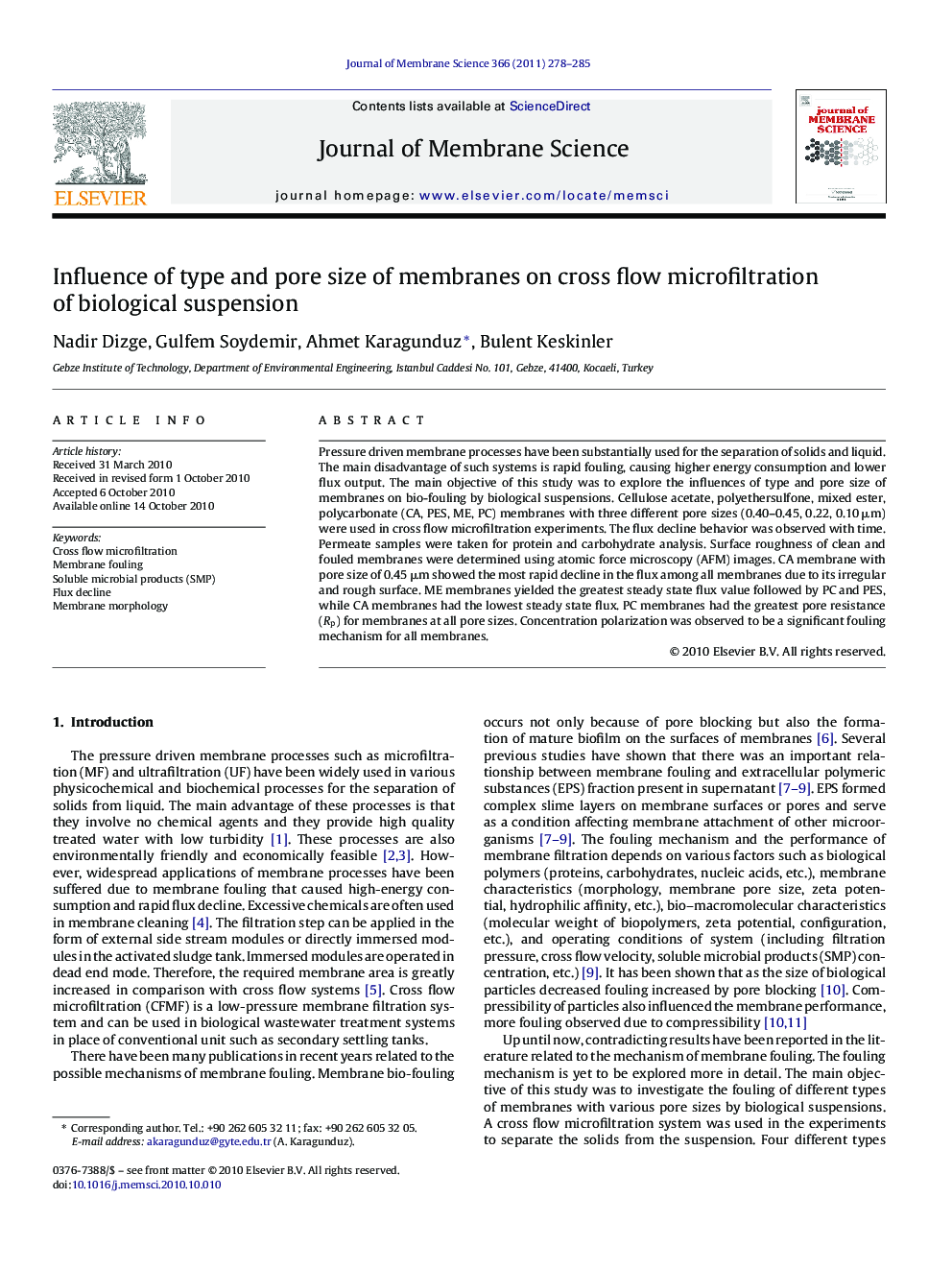| کد مقاله | کد نشریه | سال انتشار | مقاله انگلیسی | نسخه تمام متن |
|---|---|---|---|---|
| 635854 | 1456113 | 2011 | 8 صفحه PDF | دانلود رایگان |

Pressure driven membrane processes have been substantially used for the separation of solids and liquid. The main disadvantage of such systems is rapid fouling, causing higher energy consumption and lower flux output. The main objective of this study was to explore the influences of type and pore size of membranes on bio-fouling by biological suspensions. Cellulose acetate, polyethersulfone, mixed ester, polycarbonate (CA, PES, ME, PC) membranes with three different pore sizes (0.40–0.45, 0.22, 0.10 μm) were used in cross flow microfiltration experiments. The flux decline behavior was observed with time. Permeate samples were taken for protein and carbohydrate analysis. Surface roughness of clean and fouled membranes were determined using atomic force microscopy (AFM) images. CA membrane with pore size of 0.45 μm showed the most rapid decline in the flux among all membranes due to its irregular and rough surface. ME membranes yielded the greatest steady state flux value followed by PC and PES, while CA membranes had the lowest steady state flux. PC membranes had the greatest pore resistance (Rp) for membranes at all pore sizes. Concentration polarization was observed to be a significant fouling mechanism for all membranes.
Research highlights▶ ME membranes yielded the greatest steady state flux value followed by PC and PES, while CA membranes had the lowest steady state flux value. ▶ The flux increased when the pore size of the membranes increased for ME and PC membranes; however, the steady-state flux was observed to be decreasing for CA membranes as the pore size increased. The flux was minimum for PES at pore size of 0.22 μm. ▶ The surface roughness and pore geometry significantly affected the type of the fouling of the membranes. ▶ Concentration polarization was observed to be a significant fouling mechanism for all membranes. ▶ AFM images showed that the surface roughness of CA, PES and ME membranes decreased for fouled membranes which was an indication that the microbial flocks filled up the surface cavities, causing smoother surface structure.
Journal: Journal of Membrane Science - Volume 366, Issues 1–2, 1 January 2011, Pages 278–285